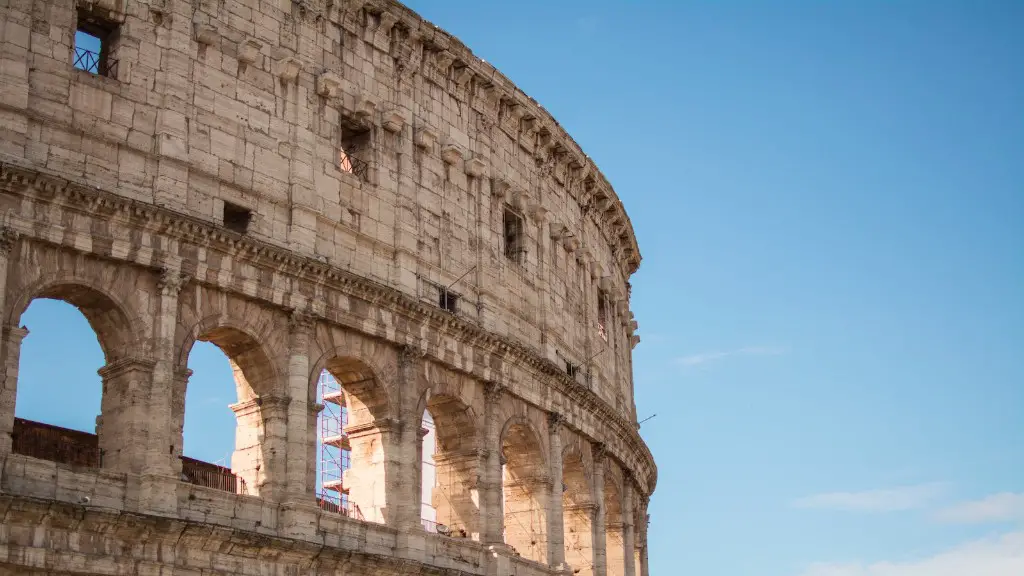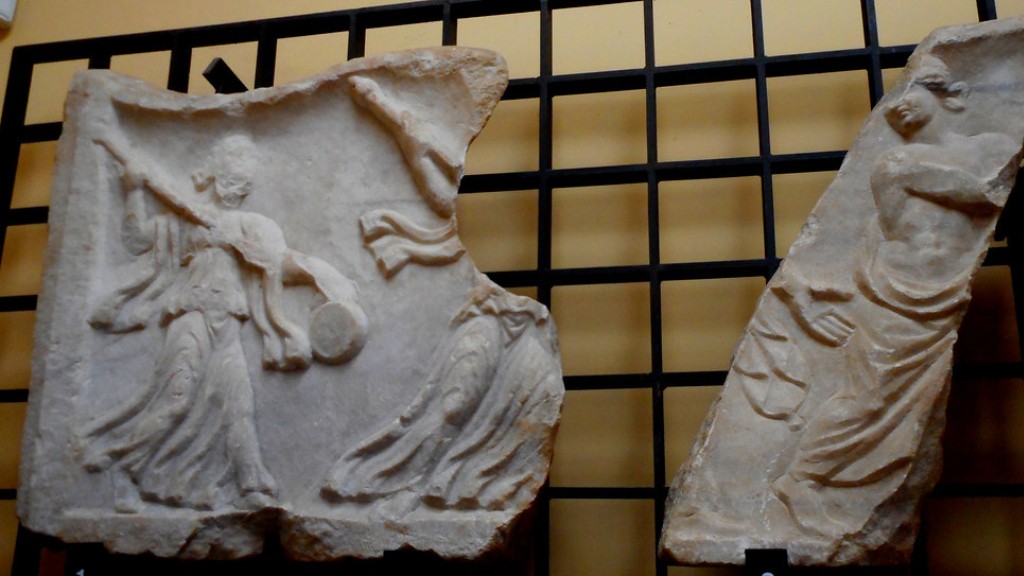I’m sure most of us are familiar with the concept of the ancient Rome roads; well-made and solid, they carried people and goods throughout the vast empire. But what were they used for? History may never know the answer to that question; however, we can certainly offer a better understanding of their purpose in the times of Rome.
Rome’s roads were built to transport goods and services, but they also had an important military purpose. Roman engineers constructed roads specifically for transporting troops, equipment and supplies. This enabled Rome’s legions to move quickly and efficiently from one part of the empire to the other, allowing them to respond swiftly to threats. In addition, these roads made it possible for Roman soldiers to reach hard to reach places, allowing them to expand the empire.
In addition to their military use, ancient Rome roads were also used by farmers, merchants and traders to transport goods and services from place to place. These goods often brought great profit as goods and services moved along these roads with greater ease. This wealth and prosperity allowed Roman citizens to live a more comfortable and affluent lifestyle.
Ancient Rome roads also provided a means of communication. Through these roads, Romans were able to spread news and information quickly and efficiently throughout the empire. Additionally, Rome’s roads were used to facilitate trade and commerce with foreign powers, allowing the empire to reap the benefits of trading goods around the world.
The ancient Roman roads also served as a vital cultural link, connecting the disparate parts of the vast empire. Through these roads, Roman citizens were able to travel and experience different places, cultures and people. This, in turn, served to strengthen the bonds of the empire and helped to spread the Roman way of life to other parts of the world.
It is clear that ancient Rome’s roads played a vital role in the overall success of the empire; without them, Rome would not have been able to thrive as it did. In today’s world, we can still learn from the example of ancient Rome, as roads remain a crucial aspect of our own infrastructure. As we continue to build a better tomorrow, let us remember the importance of connecting people and the great things that can be accomplished when we do.
Maintenance and Constructional Details
Ancient Rome roads were expensive to construct and maintain; the process of building a road often involved building bridges and aqueducts, clearing obstacles and leveling terrain, laying down paving stones, and maintaining the roads and materials as time went on. As the roads were so important to the success of the empire, their maintenance was taken very seriously; Roman engineers took great care to ensure that the roads were well kept, with regular inspections and upkeep.
In addition to the cost, constructing and maintaining these roads was an arduous process. Roman engineers and laborers worked day and night to build and maintain the roads, often in difficult and hazardous conditions. Building a road was, more often than not, a long and dangerous oper ation, and yet they were necessary, as they made transportation, trade and communication that much easier.
Although the roads of ancient Rome may not be around today, the knowledge of their construction and upkeep has been passed down to us. We can still learn a lot from the Roman way of constructing roads, as they were incredibly well made, with deep foundations and impressive materials that held up remarkably well over time.
Impact on Trade and Economy
Ancient Rome roads also had a profound impact on the economy of the empire; through these roads, goods and services could move quickly and easily from one place to the next. This, in turn, allowed for greater production of goods in the empire, facilitating widespread prosperity and stability.
The ancient Roman roads also contributed to the rise of trade and commerce with other civilizations. By linking the different parts of the empire, it was possible to trade goods from one part of the world to another in much less time. This meant that the wealth and resources of the empire could be harnessed and exploited to a much greater degree, contributing to its success.
The roads of ancient Rome were critical to the success of the empire; without them, it is difficult to imagine the Roman empire attaining the level of prosperity and stability it did. Rome’s roads were instrumental in facilitating communication, trade and commerce, allowing the empire to flourish and expand at an unprecedented rate.
Modern-day Influence
Today, the influence of Rome’s roads can still be seen around the world; many of the roads we use today are based on the principles used by the Romans. In addition, modern engineering techniques and tools owe much to the knowledge and expertise gained from the construction of these ancient roads. Even today, Roman engineering and construction techniques are studied and admired by engineers and architects, providing a glimpse into the grandeur and ingenuity of the Roman Empire.
At the same time, modern-day roads are much more than just pathways for commerce and communication; they are also used for recreation and travel, allowing for a greater sense of freedom and exploration. In many parts of the world, roads allow people to escape the hustle and bustle of the city and enjoy the sights, sounds and smells of the countryside. This was certainly something that would have been impossible during the time of the Roman Empire.
It is incredible to think that we still use many of the same principles and techniques employed by the Roman engineers those thousands of years ago. Even though the roads of ancient Rome are no longer with us, their influence can still be seen in our modern-day roads and infrastructure. This serves as a testament to the ingenuity and resourcefulness of the Roman engineers and the incredible feats they were able to accomplish in the challenging conditions of their time.
Comparison to Other Ancient Civilizations
It is also worth noting that many other ancient civilizations, such as the Greeks and the Persians, also constructed impressive roads and transportation systems. However, the roads of ancient Rome were the most impressive and well-known, as the empire was much larger than any of its contemporaries. This allowed for a greater expanse of transportation systems, allowing citizens of the empire to move from one place to the next with relative ease.
The roads of ancient Rome stood out among its contemporaries due to their quality and construction. Roman engineers had developed cutting-edge techniques that allowed for the construction of roads in much less time and with greater precision. This allowed the roads of the empire to remain well-maintained, making them more efficient and reliable than those of other civilizations.
The roads of ancient Rome were also more wide-spread than those of other civilizations; this allowed for greater communication, trade and commerce. This was crucial to the success of the Roman Empire; by allowing for such activities, the empire was able to grow and expand, allowing it to become the most powerful civilization of its time.
Environment Impact
The construction and maintenance of the roads of ancient Rome did have a negative impact on the environment. As more and more of the Roman countryside was turned over to road construction and maintenance, the fragility of the land was often compromised; this could lead to erosion, flooding and other environmental issues.
The use of the roads could also have a detrimental effect on its surroundings; dust and dirt kicked up during travel could cause shortages of water and other resources. Resources were also consumed in the construction of the roads and their upkeep, leading to deforestation and other environmental issues.
However, it is important to remember that Roman engineers were aware of the environmental impact of their activities; many of the roads were designed to minimize their impact on the environment. In addition, measures were taken to ensure that the roads were well maintained and kept in good condition. This served to reduce the environmental impact of the roads, as well as help to sustain the prosperity of the Roman Empire.
The roads of ancient Rome were essential to the success of the Roman Empire; without them, the road to prosperity would have been a much more difficult one. Even today, the influence of Rome’s roads can still be seen in the way we build and maintain our own roads; this serves as a testament to the ingenuity and resourcefulness of the Roman engineers and the incredible feats they were able to accomplish in the challenging conditions of their time.





